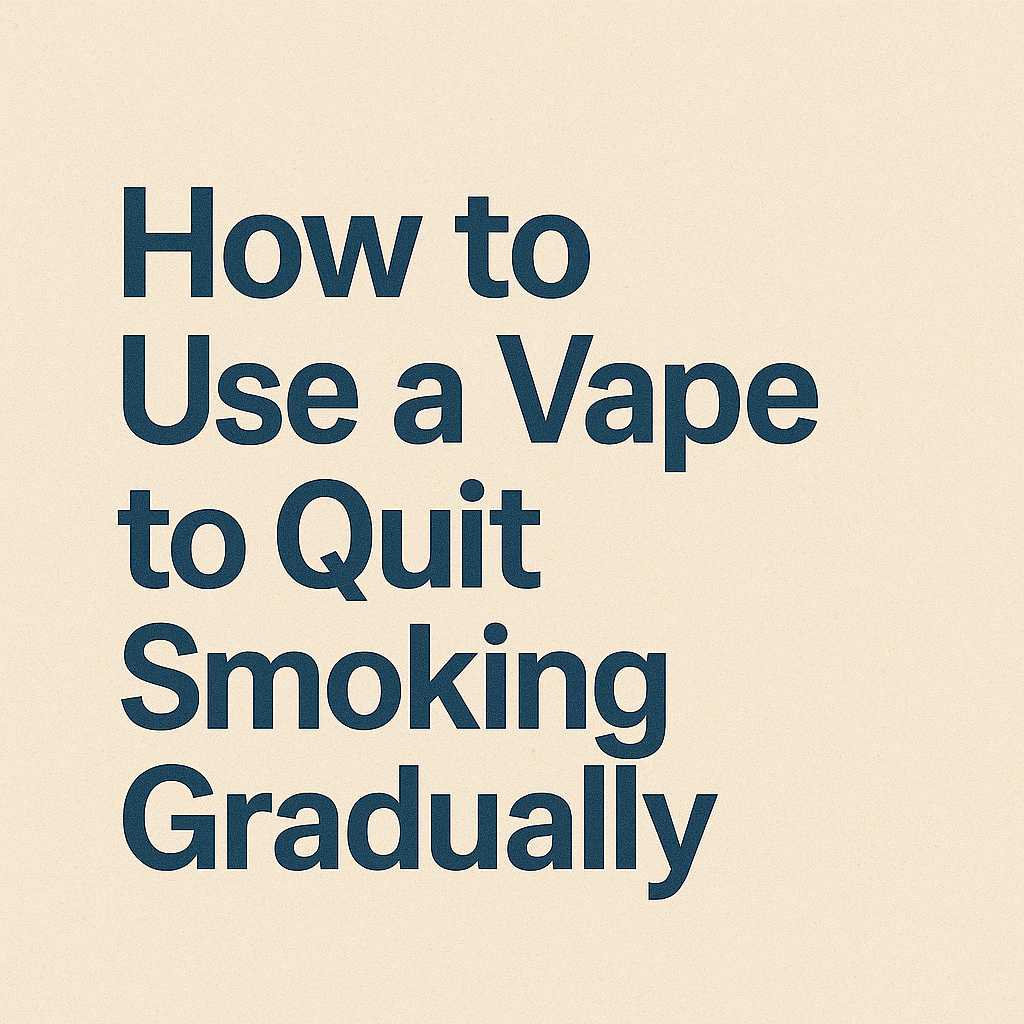Quitting smoking doesn’t have to mean going cold turkey overnight. For many people, the best way to quit is by taking it step by step — and vaping can make that process smoother, easier, and far more sustainable. Here’s how to use a vape strategically to break free from cigarettes for good.
1. Start With the Right Mindset
Think of vaping as a transition tool, not a lifelong habit. The goal isn’t to replace smoking forever — it’s to use vaping to slowly reduce nicotine dependence while keeping your cravings under control.
You’re not switching addictions; you’re managing the process.
2. Find a Vape That Feels Natural
If you want to quit gradually, your vape needs to feel as close to a cigarette as possible — same hand-to-mouth motion, same draw, same satisfaction.
- Mouth-to-lung (MTL) devices: Best for cigarette-like hits and nicotine salts.
- Pod systems: Simple, portable, and easy to refill or replace.
- Avoid sub-ohm tanks at first — they produce big clouds but deliver less nicotine per puff.
Tip: The more natural your setup feels, the easier the switch will be.
3. Match Your Nicotine Strength to Your Habit
Don’t go too low too soon — underdosing nicotine makes cravings worse and increases the chance you’ll relapse. Start with a strength that matches your smoking level:
- Light smoker (5 or fewer/day): 6–10mg e-liquid or 10–20mg salts.
- Moderate smoker (5–10/day): 12–18mg e-liquid or 20–30mg salts.
- Heavy smoker (10+ per day): 18–20mg e-liquid or 35–50mg salts.
Once you’ve stabilized and feel fewer cravings, begin stepping down every 2–4 weeks.
4. Replace One Cigarette at a Time
You don’t need to quit all at once. Start by replacing your least important cigarettes — maybe the ones after lunch or during breaks. Once that feels natural, move on to morning and evening smokes, which are usually the hardest to let go of.
Each cigarette replaced is a small win. Track your progress — it builds momentum.
5. Use Timing to Your Advantage
Cravings usually peak in short bursts, then fade. When a craving hits, vape instead — but only for a few minutes. Treat each craving as a wave you ride out, not a signal to vape nonstop. This keeps your nicotine intake stable and teaches your brain it doesn’t need a cigarette to calm down.
6. Lower Nicotine Gradually
After a few weeks, your body adjusts to the new routine. That’s when you can start tapering down your nicotine level — not before. Drop slowly:
- High → Medium (20mg → 12mg)
- Medium → Low (12mg → 6mg)
- Low → Zero (6mg → 0mg)
Tip: Don’t rush it. Spend at least two weeks on each level. The goal is progress, not perfection.
7. Watch for Mental Triggers
Even as nicotine levels drop, your brain may still crave the ritual — the break, the hand movement, the breath. Recognize that this isn’t addiction, it’s routine. Fill those moments with something else: deep breaths, short walks, water breaks, or even quick check-ins with friends.
The more new habits you build, the less you’ll rely on vaping as a substitute.
8. Reward Each Stage
Each drop in nicotine strength deserves celebration. Treat yourself to something — a good meal, new gear, or anything that marks the progress. Rewards help your brain associate quitting with pleasure instead of punishment.
9. Know When to Let Go
Eventually, vaping itself will start to feel unnecessary. When you can go hours without thinking about it, it’s time to quit entirely. Move your vape out of sight, skip sessions, and soon you’ll realize you don’t need it at all.
Final Thoughts
Using a vape to quit smoking isn’t about rushing — it’s about being smart and steady. Replace cigarettes one by one, keep your cravings in check, and lower nicotine at your own pace. The slower you go, the stronger your foundation for staying smoke-free.
Freedom doesn’t happen overnight — it happens one puff, one step, and one small victory at







Please log in to leave a comment.